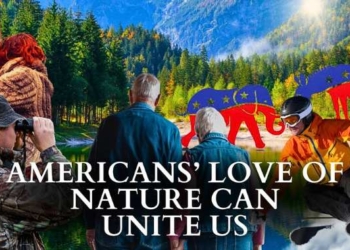
Article Source: Phys.org
A noted figure in the science world has paired with a colleague to pen an editorial for the journal Science. Jonathan Baillie, executive VP and chief scientist at the National Geographic Society and Ya-Ping Zhang with the Chinese Academy of Sciences have published a paper strongly supporting the idea of establishing many more land and sea areas as protected sites. Failure to do so, they warn, could spell doom for many species, perhaps including our own.
The writers open their paper by asking a simple question: How much of planet Earth should be protected from human interference? They note that the human population has grown to enormous levels, and will likely continue to grow ever larger. That has led to a need for more land and sea resources to support them. They note that despite this need, humans must find a way to preserve natural ecosystems—and a lot more of them than current protocols are calling for.
They suggest that the governments of the world need to unite behind a common goal—setting aside 30 percent of the world's land and oceans by 2030 and then raising that amount to 50 percent by 2050. The researchers acknowledge that achieving such a goal presents formidable challenges, but argue that doing anything less will likely result in mass extinctions and could jeopardize our own future, as well.
The authors note that currently, just 14.7 percent of the Earth's total land area and 3.6 percent of ocean areas are protected, highlighting the urgency of this issue. They further note that in 2010, the world's major players met to discuss strategies for maintaining biodiversity in the face of growing human demands.
They came up with 20 targets, one of which called for designating 17 percent of the land and 10 percent of the world's oceans as protected. Baillie and Zhang suggest such targets would be “woefully inadequate.” They propose that more realistic targets need to be established—though they acknowledge that identifying such targets is extremely challenging, considering the limited understanding of how the world's ecosystems actually work.
They believe it would be appropriate to err on the side of caution by designating more of the planet as protected than current targets. They also point out that logic suggests that the land and sea areas that are designated as protected should include those that need it most—those that are the most biologically diverse.
Explore further: Protected areas alone won't save all threatened species
More information: Jonathan Baillie et al. Space for nature, Science (2018). DOI: 10.1126/science.aau1397
















